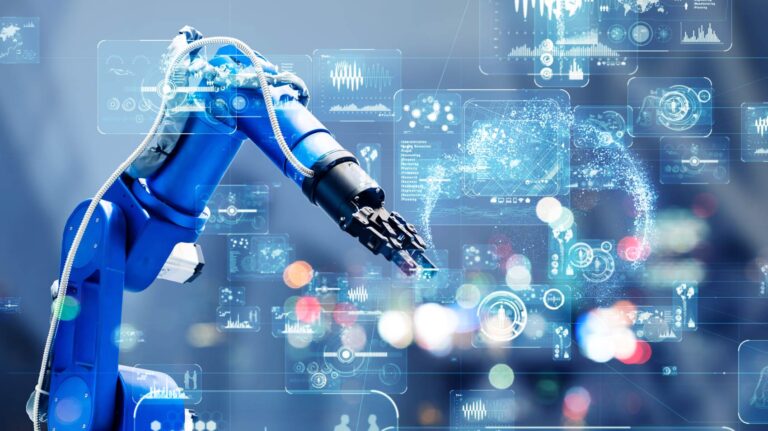With smart city technology advancing more than ever in the last few years, where and how we live our lives – in our cities – is being transformed a little further by each generation in turn.
The need to connect and collaborate online during the pandemic has accelerated the smart city ‘utopian’ ideal and fuelled a consumer need for speed and efficiency across each facet of lifestyles and workstyles.
New digital technologies, such as AI and data analytics, are making serious change possible, with a collaborative industry effort of architects, city planners, and government officials poised to deliver the human expertise required for transformation.
The successful delivery of the concept of the smart city depends on solving technical challenges as well as finding the right tech skills for smart city evolution. This means addressing key concerns around urban-rural living, mobility issues for people as much as vehicles, and the safety and security of citizens.
Closing the rural-urban gap
Narrowing the gap between urban and rural areas in smart cities is a priority in offering equal access to a more sophisticated way of living delivered through technology. Smaller towns may lack the essential skills and resources which are needed to drive smart initiatives. Leading cities will need to share their knowledge and approach and collaborate in areas such as traffic management, smart mobility, smart lighting, and smart grid energy.
Engaging initiatives at a national level will drive collaboration and action around smart thinking. For instance, the widespread adoption of smart electricity meters which are critical to minimise energy consumption and balance power across the grid.
Integrated transport increases citizen and vehicle mobility
While integrated mobility is a concept at the heart of the smart city, it’s still acutely lacking in many modernised urban communities. For instance, in a scenario where a public transport app doesn’t report some roadworks meaning that citizens miss the replacement bus service, a taxi app can then take advantage by hiking taxi prices.
More integrated transport can solve mobility issues for people as well as vehicles. Sophisticated digital assistance systems can help citizens navigate cities and towns, and buy their public transport and parking tickets. They can easily detect bus and train locations, and users can pay swiftly and efficiently using their connected bank cards.
Improving citizen safety
Intelligent urban systems can elevate safety for residents, making them feel safe around the city, wherever they are. All types of buildings need to be protected against fire, natural calamities, and unauthorised entrance. By equipping buildings with various sensors, owners can maximise security and holistically monitor aspects of the office environment, such as temperature control.
The ideal outcome is that these types of smart city alert systems become unified and standardised so that the same solution can be used to warn of wildfires in the US and floods in the UK. Such solutions can incorporate city navigation tools for everything from emergency services access to booking city services, such as hairdressers or restaurants – essentially a central hub for all smart city services.
A glimpse into the smart city
Better support for users comes from addressing the friction they experience in everyday life, such as city travel. Starting with free Wi-Fi across cities, this can enable a live stream into the buses or underground travel, with information about the current stop, live schedule, weather, and time on a screen.
Faster connections can boost traffic monitoring, such as traffic lights, CCTV, anomalies detection, traffic jams, etc. Installing more cameras that monitor traffic 24/7 can provide citizens with the earliest alerts to traffic jams and offer alternative routes.
An IoT-enabled traffic management solution can harness data from in-car sensors, road cameras, public traffic feeds, and user devices. This locally-processed data is analysed and stored on the cloud before being shared as real-time traffic updates with road users and regional traffic management centres.
Measuring success
It’s critical to consider what success looks like, and this can be measured by how user-friendly and efficient a service is, as well as cost efficiencies. For instance, reducing the time to find a parking space in a new city from an hour to just a few minutes when using parking apps which can indicate spaces and process payment.
It’s almost impossible to consider smart cities without thinking about the efficient energy management benefits of smart buildings. Sustainable initiatives such as integrated workplace management systems already have the capability to monitor over 50,000 data points per second, analyse data, and send it to mobile apps. This could see millions of users saving energy.
With a long-term vision for smart city platforms to become unified or standardised, one solution can potentially work seamlessly anywhere in the world. Platforms could integrate city infrastructure and navigation, and access to emergency and city services. Transformation will be driven by users empowered with the right data, perhaps even according to their user type of student, tourist, or city resident.
The future of smart cities
Some recent advances are powering changes that, if successful, might mean we may never go back to the way things were. For instance, self-driving vehicles have real potential to transform urban transport. By using data intelligently and identifying the fastest, lowest carbon consumption route, there is the potential for the minimisation of traffic jams and pollution in one hit.
Once the stuff of dreams, flying vehicles are an exciting potential reality, like the recently showcased eVTOL flying car X2. These cars could revolutionise travel within urban environments with faster journey times, and a decrease in accidents and emissions.
It’s inevitable that the perfect blend of human expertise and technology will play a major role in making cities more comfortable, sustainable, and secure. This might be through improving the commute, more sustainable work practices, smart shopping, or other solutions that enhance citizens’ daily lives, while also looking after the planet.
About the Author
Roman Pavlyuk, VP Digital Strategy at Intellias. Intellias is a trusted technology partner to top-tier organizations and digital natives helping them accelerate their pace of sustainable digitalization. For over 20 years Intellias has been building mission-critical projects and delivering measurable outcomes that meet our clients’ business needs. We are contributing to the success of the world’s leading brands, among which are HERE Technologies, LG, Siemens, Swissquote Bank, KIA, TomTom, HelloFresh, Xerox PARC, and Deloitte. Intellias empowers businesses operating in Europe, North America, and the Middle East to embrace innovation at scale.
Featured image: ©Metamorworks


